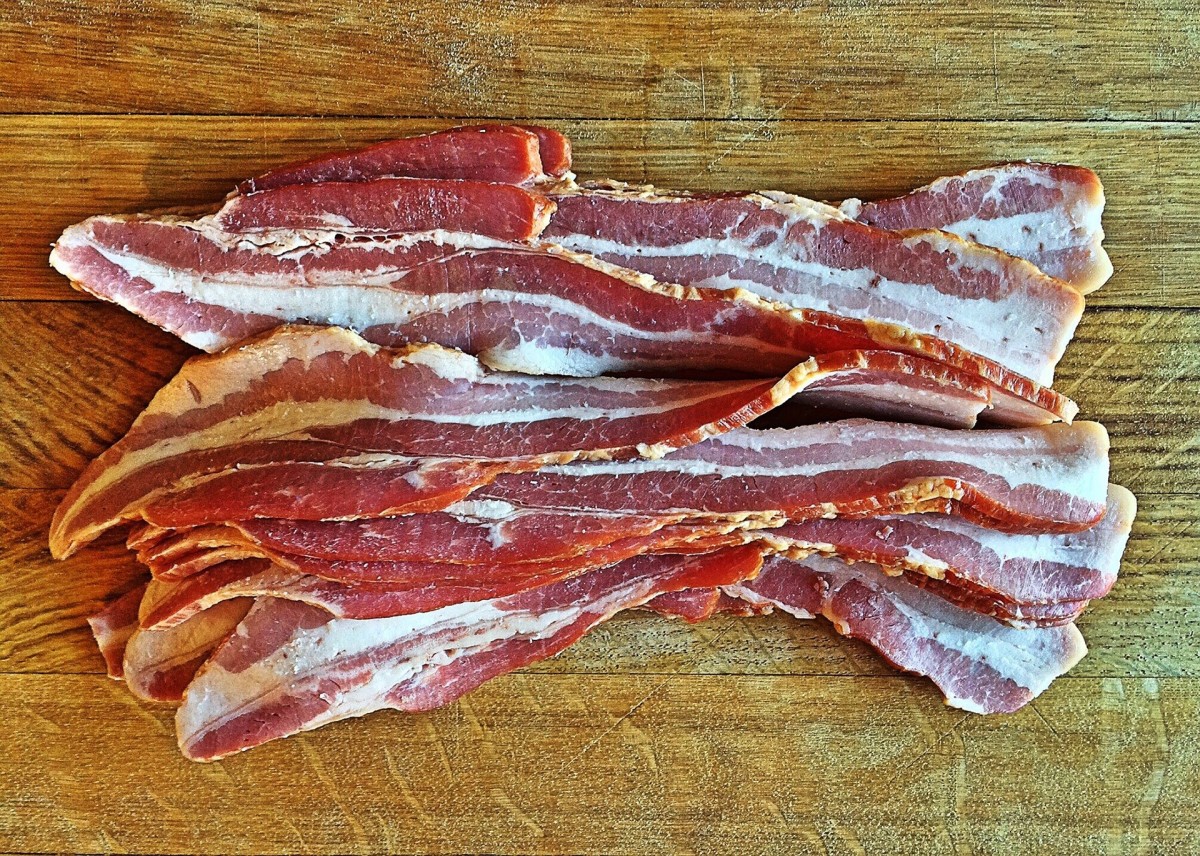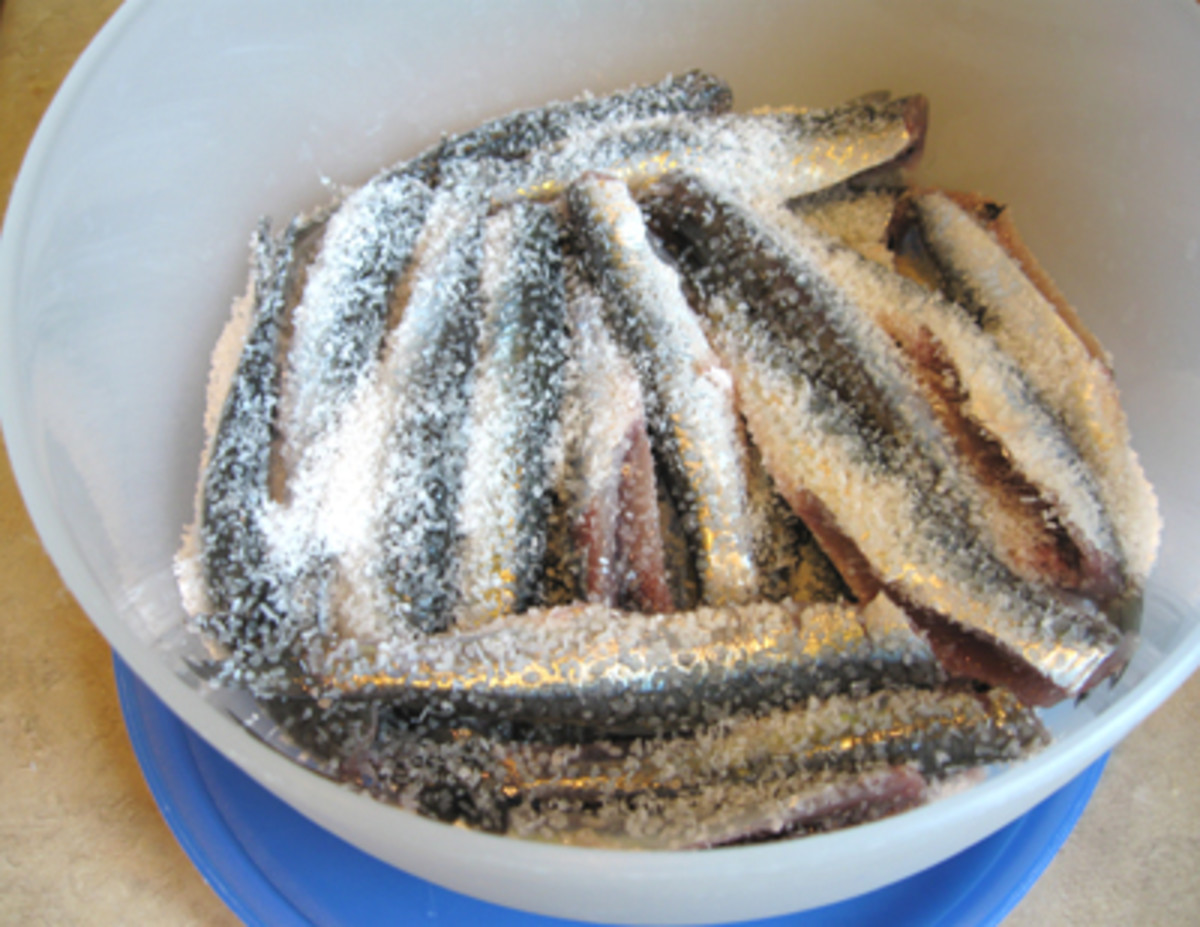What Is Processed Meat?
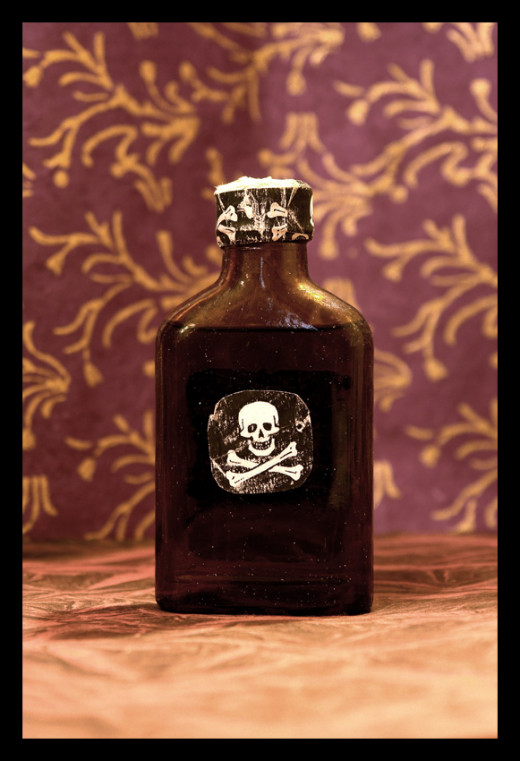
I remember being a sophomore in college and taking my first Organic Chemistry class.The professor was a very intimidating man, but well respected in the organic chemistry community. He had the propensity to waste the first five minutes of every class sharing mostly nonsense stories. One story, however, all these years later still stands out, the story of how he became a vegetarian. I don't remember what we learned in class that day, but I do remember the professor telling us about the study he did on some of the chemicals commonly found in meat products. The results were cell death and cell mutation, which many of you may not know is really cancer. My professor said he never ate meat again after that particular study.
Processed meat can be dangerous for your health. If the story above didn’t convince you, then keep reading. Below you’ll find some of the common chemical additives to meat and what they could potentially be doing to your body. And don’t worry. Though it would be extremely healthy for our planet, I am not telling you that you have to give up meat for good, just that you need to be a little bit pickier about what kind of meat you decide to eat.
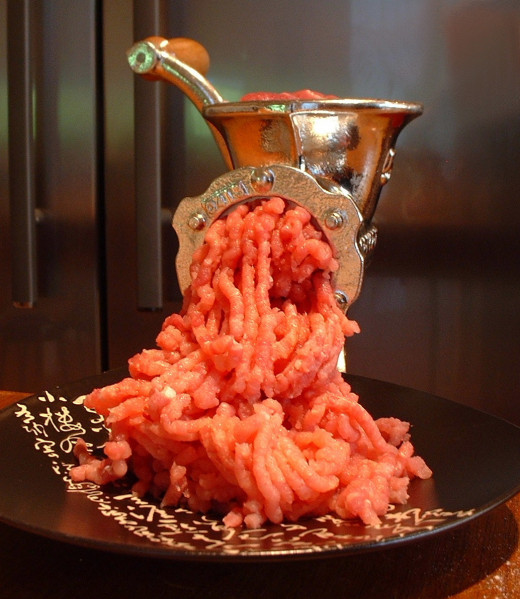
What is Processed Meat?
The general definition of processed meat is meats that are preserved through smoking, salting, freezing, canning, or by adding preservative chemicals. The process of preservation leads to a change in the state of the meat. This article focuses on processed meats preserved with chemicals or otherwise processed by chemicals.
There are many chemical additives in meat, most of which you probably haven’t even heard of. Some are added to the animal while it is still alive, others during processing to preserve the meat or enhance the flavor, and some chemicals are added, if you can believe or not, just to make the product safe for human consumption. I am going to talk about all three types of chemicals and, from a chemist’s pov, detail what the negative effects of those chemicals on your health might be.
Antibiotics in Meat
The animals we eat in mass consumption live in deplorable conditions. This is not a PETA PSA to shove those horrible images in your face and shame you into not eating meat. It is simply the truth. In order to save money and to mass produce animals for all those burgers and chicken nuggets, hundreds or even thousands of animals are tightly packed into a small space.
Because there are so many animals (cows, chicken, pigs, etc) packed so tightly in unsanitary conditions, disease spreads quickly. As a precaution, antibiotics are regularly administered to all of the animals. Antibiotics also have the added benefit of making certain animals grow bigger, quicker, and with less food though no one is quite certain why. Antibiotics in meat have no direct immediate negative side effect on your body, however they may prove fatal in your future.
Antibiotics kill bacteria that cause infection. Bacteria, however, mutate very quickly. When antibiotics are overused, like they are in animal production, the bacteria adapt and become immune to antibiotics, creating an antibiotic-resistant strain. If you then contract the antibiotic-resistant strain, traditional medicines will not work to cure you of the infection and if your immune system cannot battle the intruder, the infection would be fatal. “An infection that is now considered relatively easy to treat could once again prove fatal should antibiotics continue to be misused in food and animal production and exacerbate this growing public health crisis,” said Robert Lawrence, a professor with the Johns Hopkins Bloomberg School of Public Health in Baltimore.
Companies are not required to inform you on whether or not they use antibiotics, but if you buy local you can just ask the owner. Fortunately, the FDA recently announced that it would begin phasing out the use of antibiotics in animal feed. Which tells you exactly how safe the FDA thinks antibiotic use is.
Hormones in Meat
Most beef cows in the United States receive some form of hormone, such as estrogen, or steroids. It is hard to tell what effect additional hormones have on the human body, though, as hormones are naturally present in the body and any amount we ingest is insignificant compared to our bodies’ natural levels. However, the Huffington Post reports, that though tests are inconclusive, consumption of processed meats may lead to early puberty in children because even a small amount of hormones can have a profound effect on the bodies of children who are not yet producing the hormone. According to WebMD, studies also suggested that for women prolonged exposure to estrogen can lead to a higher breast cancer risk.
However, since these hormones naturally occur in the body as previously stated, it is hard to study the effect of eating hormone laced meat. Not enough studies have been done, so there is no real answer on how added hormones are affecting you.

Preservatives and Flavor Enhancing Additives
The majority of the meat you eat is not raised locally to you. Plus the product needs to be shipped to a manufacturing plant for processing before finally being shipped to the store. Due to this long operation, the meat needs to be preserved or it will be rotten before it even reaches the supermarket. Most companies chose to use potentially dangerous chemicals to preserve the meat and to enhance the flavor.
Butylated hydroxyanisole(BHA) and Butylated hydroxytoluene (BHT)
Chemical Formula of BHA: C11H16O2
Chemcial Formula of BHT: C15H24O
Most of you have probably heard of BHA and BHT. They are antioxidants that are commonly added to meat to prevent the product from spoiling/going rotten.
There is no concrete evidence that suggests BHA or BHT are harmful or toxic. Studies done on rats and mice have shown that BHA and BHT in large quantities cause cancer. However, the cancer usually formed in the forestomach, an organ that humans do not possess and humans are unlikely to ever consume the amount given to rats in a short period of time. Over a lifetime, though? It is possible. Whether or not the effects are cumulative is not a question in which I am sure there is an answer. There are also safer alternatives to BHA and BHT, such as Vitamin E, but most companies, despite the potential risks, choose to use BHA and BHT.
New theories suggest that an excess amount of antioxidants may cause more cancer than they prevent. The idea was first theorized by Dr. Watson, yes the Dr. Watson, the man who helped come up with the structure for DNA, but studies back Watson’s claim. Antioxidants eradicated free radicals. Free radicals, which are unpaired electrons, which are highly unstable and can pretty much destroy or mutate any genetic material, such as DNA, that gets in its ways. This is why, for so long, people have thought antioxidants prevent cancer. However, Dr. Watson’s theory, and new evidence suggest, that in modern society we are overdosing on antioxidants and killing off all of the free radicals in our body. Sounds like a good thing, but our body needs some of those naturally occurring free radicals in order to stay balanced. By eradicating all of the free radicals, we are actually increasing our risk for cancer, rather than decreasing it as previously. You can check all of this out at Dr. Oz’s website here: The Antioxidant Myth.
I started this section with BHA and BHT because they are probably the most well-advertised chemical additives in meat, but even with their link to cancer, they are not the chemicals you really need to be worrying about.
Chemical Additives in Oscar Mayer Bologna
- Sodium Nitrite
- Potassium Chloride
- Potassium Lactate
- Sodium Phosphates
Sodium Nitrites and Sodium Nitrates
Have you ever heard of a MSDS, or Material Safety Data Sheet? Though, now it is simply called a Safety Data Sheet. They can be found in most workplaces and are used to provide people with procedures for the proper handling of and working with substances in a safe manner. A MSDS also lists the hazards of a certain chemical. An MSDS is a valuable asset to every chemist and could save your life if you ever spill something dangerous on yourself or on your immediate surroundings. Why am I telling you this? Because I looked up the MSDS’s for some of the common chemicals found in processed meat.
Let’s start with sodium nitrite, chemical formula NaNO2. If you grab a pack of bologna and read the ingredients, I guarantee you sodium nitrite or sodium nitrate will be listed. Sodium nitrite is used as a preservative in meats like salami, hot dogs, pepperoni, bologna, ham, bacon and SPAM. It preserves the color and can inhibit botulism.
According to the MSDS, under potential health effects, soodium nitrite has a moderate health rating of 2, and is therefore considered toxic. It can irritate the mouth, esophagus, stomach, etc. Excessive amounts affect the blood and blood vessels. Signs and symptoms of sodium nitrite poisoning include intense cyanosis, nausea, dizziness, vomiting, collapse, spasms of abdominal pain, rapid heartbeat, irregular breathing, coma, convulsions, and death due to circulatory collapse. An estimated lethal dose is 1 to 2 grams. Are you likely to get a lethal dose from processed meat? No. But do you really want to put something that is a known toxic chemical in your body?
As if that wasn't bad enough, studies have also shown that sodium nitrite reacts with stomach acid and other chemicals in the stomach to produce nitrosamines, which have been shown to cause cancer in animals when consumed in large quantities. Sounds extremely pleasant.
Well what about sodium nitrate, which is very similar to sodium nitrite and used for the same reasons? The chemical formula is NaNO3, so it differs from sodium nitrite by an additional oxygen. The MSDS, under potential health effects, has sodium nitrate listed as slight health rating of 1, therefor not as harmful as a nitrite. However, when consumed in it’s pure form, the MSDS also says it may cause gastroenteritis and abdominal pains. Other symptoms of consuming pure sodium nitrate include dizziness, bloody diarrhea, convulsions, and collapse. Purging and diuresis can be expected and small repeated doses may cause headache and mental impairment. If you think sodium nitrate is a safer alternative to sodium nitrite, think again. Rare cases of nitrates being converted to more toxic nitrites in the stomach have also been reported, mostly in infants.
If you need even more incentive not to eat meats with these chemicals, then you should know that in the 1970s the US Food and Drug administration tried to ban the use of sodium nitrates and sodium nitrites. Food companies argued, however, that there was no alternative, so the use of these chemicals once thought too dangerous for consumption were allowed for continued use in the meat industry. Stew on that.
Let’s look at a few other chemical additives found in meat and their MSDS’s.
Monosodium glutamate (MSG)
Chemical formula: C5H9NO4Na
Monosodium glutamate is added to processed meats and to other common foods, such as soups, salad dressing, chips, frozen entrees, etc, as a flavor enhancer that makes your meat taste fresher.
The MSDS on MSG says ‘swallowing this material is not likely to be harmful.’ Whew, that’s a relief. Finally a chemical additive that isn’t likely to give me cancer when I’m older. But hold your horses! Because it turns out MSG really is terrible for you after all. Dr. Russel Blaylock, a retired neurosurgeon and author, found that MSG can lead to not only headaches and migraines, but can also cause nerve and brain damage. These results are also collaborated by studies done by the FDA. MSG may be linked to obesity, eye damage, fatigue and disorientation, and depression and could cause the following symptoms: numbness, tingling, facial pressure and tightness, chest pain or difficulty breathing, nausea, rapid heartbeat, drowsiness, and weakness.
So MSG, not quite as harmless as one might be led to believe.
Propyl Gallate
Chemical Formula: C10H12O5
Propyl Gallate is used in conjunction with BHA and BHT to prevent the meat from spoiling/going rotten. Sometimes found in meat products, chicken soup base, and chewing gum.
The MSDS has propyl gallate listed as having a potential link to cancer, and hazardous in case of ingestion, though the MSDS is unclear of how.
Sodium Phosphates
Sodium phosphates are added to meat because they increase the pH. As a result of increased pH, the protein is able to hold more water thus increasing product yield during processing. They can also act as a preservative by inhibiting rancidity and prolonging shelf life.
Notice that phosphates is plural. There is such a thing as sodium phosphate, but most companies list the ingredient as sodium phosphates. Sodium phosphates is a generic term for a variety of salts of sodium and phosphate. This essentially means they're not really telling you what is in your meat afterall as one or any number of sodium phosphate derivatives could be an ingredient.
Just so you know, sodium phosphate (the sodium phosphate, chemical formula Na3PO4) is a laxative that according to Medline Plus can cause kidney failure. This has actual scientific proof behind it as research, led by Professor Eberhard Ritz of Nierenzentrum Heidelberg, Germany, found that elevated phosphate levels are linked with chronic renal (kidney) failure in humans.(From Phosphates in Food is Health Risk by Nathan Gray)
The USDA limits the amount of sodium phosphates that can be used in meat, but not because of the potential risk of renal failure. Do you know the real reason why? It is because sodium phosphate and fat from the meat cause a chemical reaction that makes soap. So if you happen to taste soap in your sausage, you are not crazy. It really is soap. Yum.
Sodium phosphates are widely used in the meat industry. Taco Bell recently released the ingredients for their meat and sodium phosphates is number 5 on the list. Taco Bell says they add sodium phosphates to "help make sure our seasoned beef is the right texture." First of all, they are not very specific on which sodium phosphate they use in their meat, they just say 'sodium phosphates' and that could mean one or more of many different chemical compounds. Second, when they say sodium phosphates make their beef the right texture, that's just PR talk meaning they really use it as a preservative. And third, if your taco has a weird soapy flavor to it, then that really is soap you are tasting.
Are these the only chemical additives found in meat? No. You could also potentially find potassium salts of tripolyphosphate, hexametaphosphate, pyrophosphate or orthosphosphate, sodicum lactate, sodium diacetate, sodium ascorbate, and mono- and di-gylcerides just to name a few. Some of these have links to cancer and others are relatively harmless, or even natural, but harmful in excess. Such as mono- and di-glycerides, which are natural and not artificial chemicals, but they are artificially added to meat. Are any of them good for you? Let’s just assume that anything artificial added to your food is going to have some potential health risks, because it’s pretty much always true.
That hamburger’s not looking so tasty anymore, is it?
Pink Slime
Still hungry for that burger? Consider this. You've probably heard of pink slime. Well, it's not a myth, or an alien life form, and it really can be found in about 70% of all hamburger products from McDonald's and Burger King foods to the lunches served in schools to that can of Chef Boyardee.
Pink slime is created by taking all of the leftover trims and pieces of a cow that nobody wants and is unfit for human consumption. To make it edible and not harmful for human consumption, they put the leftover cow parts in a centrifuge to separate the fat, then they clean the meat with ammonia to kill the E-coli and other common contaminants found in the product. Finally they grind it up to make hamburger. Sounds delicious.
Ammonia, in it's natural state, is a very pungent gas that can be poisonous if inhaled. In fact, quite recently, in Kennewich, Washington, hundreds of people were evacuated from Toyota Center during a junior hockey game because of an ammonia leak. Ammonia is not only an irritant to the eyes and throat, but can cause severe chest pain, difficulty breathing, wheezing, vomiting, a rapid or weak pulse, altered mental state, severe burns on the skin if contact is more than a couple of minutes, severe stomach pain, and more. When mixed with water, it is called liquid ammonia, or ammonium hydroxide, a caustic solution that is slightly less dangerous than the gas (it usually won't kill you if you drink it where the inhaling it can kill you).
This is in your meat. Think about it. Yes that burger is delicious. It's also quite disgusting too.
Meat Recalls
Potentially dangerous chemical additives are not the only reason to avoid overly processed meat. If you are not convinced by now, consider the most recent beef recall by Rancho Feeding Corp. Rancho recently recalled 8.7 million pounds of meat products because the animals were 'diseased and unsound' and not properly inspected. According to CNN, the recall reached 35 states and it even reached Guam. The recall presents a health hazard situation where "there is a reasonable probability that the use of the product will cause serious, adverse health consequences or death (USDA)."
According to the USDA website there have been at least 23 meat recalls this year alone for reasons such as salmonella, E. coli, listeria, or foreign matter contamination, and lack of full inspection or product mislabeling. Recalls are a common occurrence and sometimes no one knows the meat is tainted until after people start getting sick. Most of us take that risk every day, however, we don't have to.
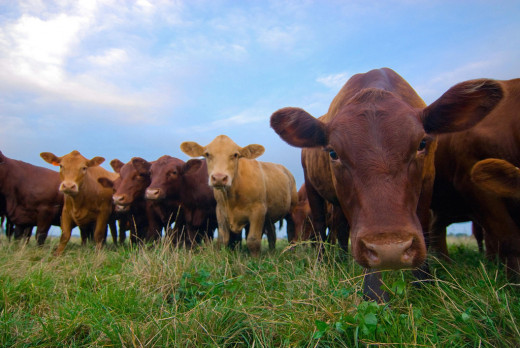
What to Buy Instead
You can still eat meat without eating these chemicals or risk eating meat that hasn't been fully inspected. Instead eat fresh meat, grass fed or free range products, and most importantly local. When I lived in Philadelphia, there used to be a farmers' market a few blocks from my apartment that sold fresh, local, grass fed or free range meat with no chemical additives. It was not only sold by the local amish community, but by other local vendors as well. I bet if you look, you could find something similar in your community. Of course you are going to pay a little more for it, but it is worth it.
Or buy certified organic meat. Organic livestock are: (1) fed only organic, vegetarian feed and they may not be fed meat from other slaughtered animals (a common component of conventional livestock feed); (2) they are not treated with any antibiotics or hormones; (3) the meat is not treated with radiation; and (4) they are raised under conditions that allow exercise and access to the outdoors. So not only is it healthier for you and the planet, the animals are treated humanely. What more do you need to eat healthier?


